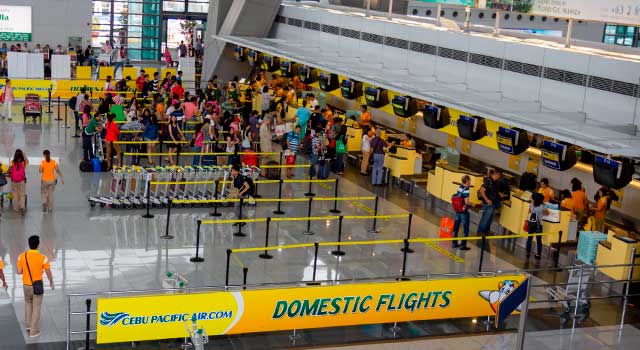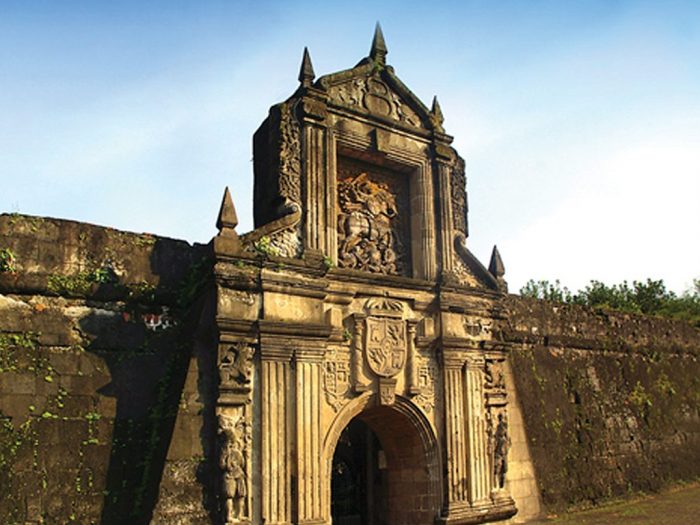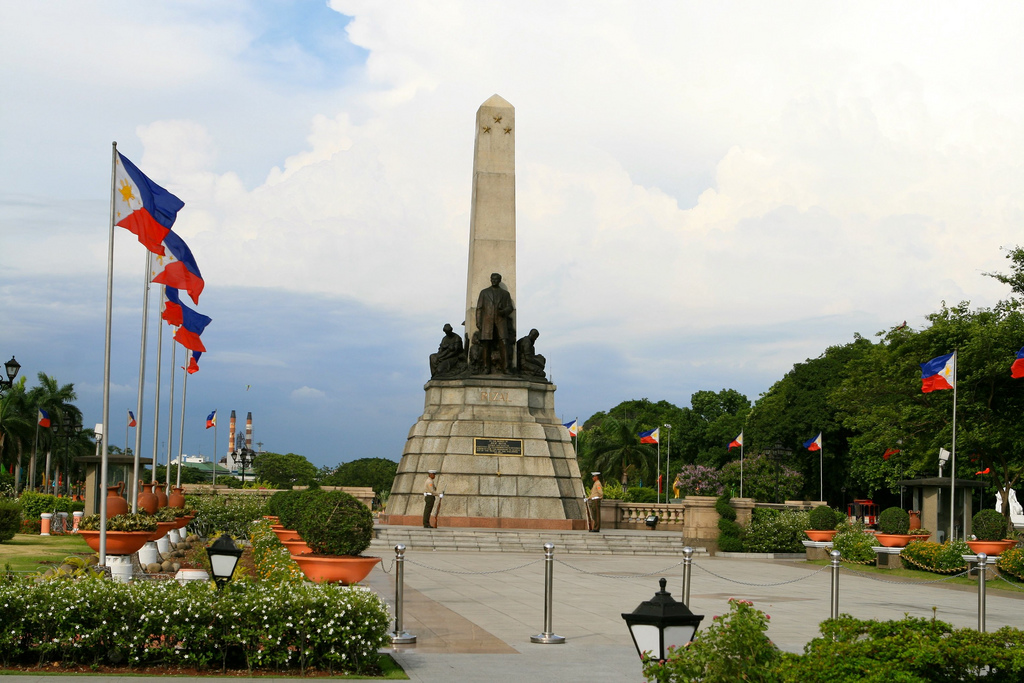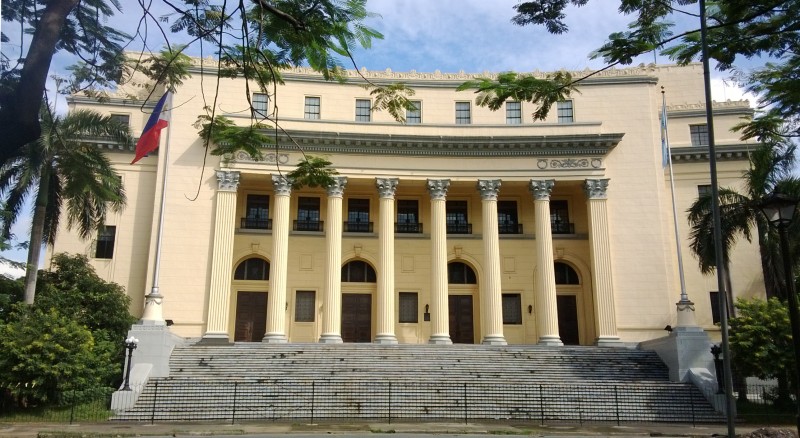Manila Philippines is the capital city of the country, and houses wealthy history, culture and tradition of the west and Asian heritage. Here you would easily see Asian and Christian influence blend because of the past Spanish occupation. Hence, you would spot old Spanish infrastructures from 1500’s to 1800’s, such as the entire city of Intramuros. And these historic buildings are standing side by side with establishments built after World War II, together with modern buildings of today.
The Manila is sitting at the spit of Pasig River within the island of Luzon, and originally consists of Sampaloc, Malate, Intramuros and Ermita. Today, it have grown to Metro Manila, a region comprised of 17 cities, which serves as the main economic, political, industrial, commercial and cultural spot of the Philippines. Hence, you would spot people from different walks of life in the city, from poor yet hard working citizens to businessmen and political figures.
1. Where to Stay in Manila Philippines

There are different accommodation options throughout the city. However, the district of Malate is a popular choice, since it’s located near the Ninoy Aquino International Airport (NAIA). It’s also a hub for nightlife areas, restaurants and leisure venues among other establishments. Moreover, affordable hostels are available, such as “Where 2 Next” accommodation.
Where 2 Next is an accommodation with cheap rates in Manila Philippines, which depends on the type of bed or room you take. For example, you only have to pay 550pesos for a bed in a room for 14 occupants. Triple bed rooms are available too, which cost around 1710pesos. Also, useful amenities and services are available, such as smoking areas, luggage storage and laundry among others.
Aside from Malate, Pasay and Makati offer a wide range of accommodations too. Both cities belong to Metro Manila, and are near to the airport. Also, the district of Makati is popular because it’s one of the top Asian financial districts. Thus, expect to see a lot of commercial establishments around, such as restaurants and accommodation services.
Manila Hotel, for example, is perfect if you want to indulge with luxury in the city. It’s only 900m away from Manila Cathedral, and 700m from Intramuros. Also, it offers the best accommodation amenities in the capital of the Philippines, such as gym, spa, restaurants and business centers among other facilities.
2. How to Fly to Manila Philippines

There’s no available direct flight to Philippines from Spain. (This article is dedicated for my Spanish friend, from Elige Filipinas who would like to visit Philippines) That’s why you should find the most practical connecting flights to the capital of the Philippines. Consider travel with lesser number of flights for you to reach Manila Philippines conveniently.
But be sure to prepare your returning flight because Philippines require it for entry of tourists. The good thing is, it’s quite convenient to arrange, since airlines usually require passengers to provide proof of return flights upon booking. Also, note that you can apply for a free 21-day visa upon arrival, and you can extend your stay for up to 59 days. Connect with the immigration office to know more.
3. Airports in the Philippines

There are many airports in the Philippines. However, if you plan to visit Manila Philippines, be sure to land on Ninoy Aquino International Airport (NAIA). Other airports include Clark Airport in Pampanga, Francisco Bangoy International Airport in Davao, Mactan Airport in Cebu, Airport Kalibo International in Kalibo and Iloilo Airport in Iloilo.
4. What to do in Manila Philippines
Isla Manila offers dozens of attractions you should visit through your travel. The best places to check are:
Intramuros

Intramuros is the walled city built by Spaniards during their occupation in the country. Hence, you would observe the close connection of Spain and the Philippines, which is noticeable on Spanish style churches, schools and houses. Moreover, the place is easy to tour through walking, or by riding on horse carriages with guide for 3 euros.
Fort Santiago
/GettyImages-515030857-599ff63e03f402001100ee1d-6218e3c18a3a4503a2a1fb183ce8ccfb.jpg)
Fort Santiago is the oldest Spanish fortress in the Philippines. It served as the main defense fort throughout the spice trade with Americans. And that’s with its strategic location, near the spit of Pasig River, near Manila Bay and within the walls of Intramuros. Today, it shelters few of the best handicrafts of Dr. Jose P. Rizal.
Manila Bay

Manila Bay is popular because of the fascinating sunset view it offers. Family and friends flock the area while enjoying ice cream they buy from small carts. Also, affordable accommodations are available near the area for your stay.
Rizal Park

Rizal Park or Luneta Park is an urban park which is a favorite relaxing spot for families, friends and tourists in Manila Philippines. It houses few hundred years of Philippine history as well, from Spanish colonization to the present time. Moreover, here you would find Dr. Jose P. Rizal’s monument, which keeps his remains underneath.
San Agustin Church

San Agustin Church is a Spanish church originally built in 1571; hence, making it the oldest church in Philippines. It withstood different major wars and natural calamities for 400 years and counting.
5. National Museum of the Filipino People

The National Museum of the Filipino People houses a large collection of historical and archeological items from all over the archipelago. It houses items such as those recovered from a Spanish shipwreck which sank in 1600’s, and Chinese valuables from the commercial trade of 1100’s. Moreover, it also keeps ancient jars from 5 BC in Mindanao. And everything is safely kept in a building with wonderful Greek renaissance architectural design.
National Institute of Science and Technology
The National Institute of Science and Technology features a wide range of scientific references in Manila Philippines. It also houses a large collection of plant and animal species which you should discover.
Kamaynilaan Library and Museum
The Kamaynilaan Library and Museum is another perfect venue to indulge yourself with fantastic artworks. Here you would see brilliant collections of paintings and carvings among other handiworks, and the library keeps an intensive archive too.
6. Weather and Climate in Manila Philippines
Tropical climate houses the city, which means you should expect wet season from June to November and dry atmosphere from December to May. May is the hottest month in Manila Philippines, with temperature averaging on 30 ° C (85 ° F). On the other hand, January is the coldest month in Manila, with temperature hitting the average of 26 ° C (78 ° F). Moreover, July to September is the rainy months of the city, with August usually experiencing the most rainfall.
7. Where to Eat in Metro Manila Philippines
Remember that Manila Philippines fascinatingly blends western and Asian cultures in one. And you would notice such blend almost literally on the dishes it serves. Expect to taste food which mixes western and Asian flavors; hence, you would spot different dishes and food items that suits varying personal taste.
You should start with the street food stalls all over the city. Here you can buy pork, beef, chicken, fishes and seafood among other food choices. And you would notice the significance of rice for every Filipino meals as well.
Also, you can’t talk about street food in Manila capital of Philippines without mentioning “Balut”. Its fertilized duck eggs, boiled with its embryo still intact inside.
After tasting the street food options Philippines serves, go to Salcedo Market in Makati for popular international dishes you probably know. It serves different dishes from all over the world, which includes vegetarian dishes you would love.
8. Best Shopping Centers in Manila
Manila is a popular commercial and economic Asian city; hence, different shopping centers are available all over the metro. One of the most popular malls in Manila Philippines is SM City North EDSA, which is also known as “The Block”, in Quezon City. It’s a shopping mall where you can buy and spend all you want all day long. And it features enjoyable leisure, entertainment and dining areas for everyone as well.
The Greenhills Complex is another brilliant yet interesting shopping center in the Philippines capital city. Here you can buy imitation items of popular brands in the world, including brands of smartphones, shoes and clothing among other items. What’s more, many vendors would allow you to haggle with the best price you can afford.
Finally, be sure to visit the Quiapo Market near the Quiapo Church for some Filipino souvenirs and handicrafts. Here you would spot traditional Filipino items, such as wood carvings, amulets and small statues of saints among other stuff. As a bonus, the place perfectly captures the union of Asian and Christian heritage for you to appreciate as well.
9. How to tour around Manila Philippines
Metro Manila has different transport options for your tour. The most popular choices are:
Public Transportation Lines
- Metrorail – a train system which runs around the path of Epifanio de Los Santos Avenue (EDSA). EDSA is the main highway which runs throughout Metro Manila.
- Lightrail Transit – the train system which features 13 stations, and passes through the cities of Pasay, Makati, Mandaluyong, Pasig, San Juan and Quezon.
- Buses – bus lines are popular for Philippines city travel. You can find public and private bus companies which offer rides throughout, inside and outside Metro Manila. Note, however, that rates differ from the type of bus (air conditioned or not), and to your destination.
10. Private Transportation Options
There are taxi cabs available in Manila Philippines. But jeepneys are the popular and traditional transportation choice for locals. These are vehicles designed from military jeeps of World War II, and are painted with bright colors and fancy decors. Remember, however, that Manila is notorious with its heavy traffic jams, and jeepneys are often caught in it.
But these are traditional vehicles which lets you feel the life of being a Filipino in a tour. That’s why you should not miss a ride through your visit. In doing so, notice the signage in front and at the side of jeepneys. Those tell the routes it passes, and you should ride on one which passes your destination.
This is just a short guide for a tour in Manila Philippines. Be sure to plan and prepare ahead, so you would experience an enjoyable and worthwhile visit.
Share Wandergala to your friends and let’s go to Manila Philippines!!


